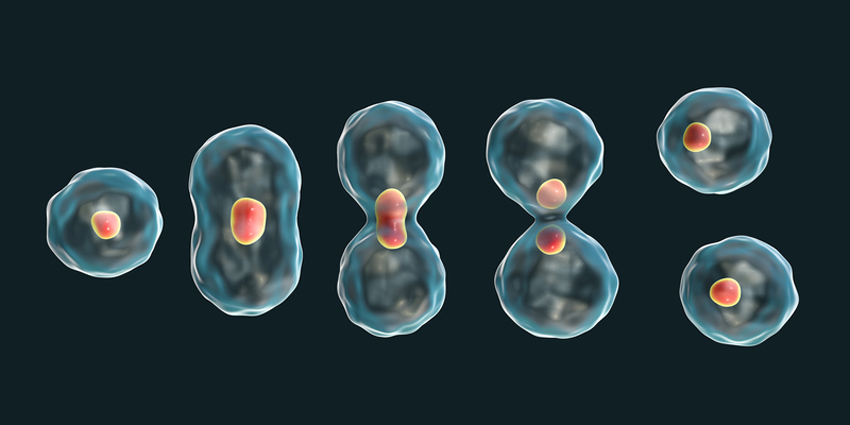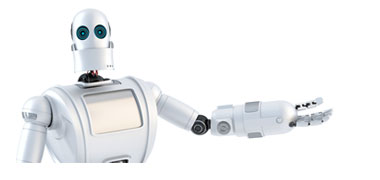
2nd March 2023 Newly found cell mechanism involved in aging A previously unknown cell mechanism involved in the aging process has been discovered, which explains how cells "remember" their identity when they divide – the cells' so-called epigenetic memory.
As time passes and we get older, many cells need to replenish themselves. They do so by dividing into new cells: heart cells, skin cells, and so on. But when cells continue to divide and make new cells, they lose some of the information from their mother cell. In the end, they may have lost so much of the original information that the structure of the genome deteriorates, which makes the new cells less good at their job. They may even do unwarranted thing such as divide too much and become cancer cells. Because cells lose important information over time, scientists want to understand how that information is copied. If the process is known in detail, it could be possible to make cells preserve themselves much better, thereby counteracting cancer and perhaps even slowing down aging. In a new study, published today in the journal Cell, researchers from the University of Copenhagen discovered an unknown mechanism of how cells "remember" their identity when they divide – the cells so-called epigenetic memory. "Once we fully understand this mechanism, it could help counteract cancer and aging," said the paper's corresponding author, Professor Anja Groth, who leads a research group at the Novo Nordisk Foundation Center for Protein Research. "It is a part of the amazingly complex network acting to maintain the function of each cell in our body. If we disrupt this mechanism, we could make cells forget their identity and this could help turning them into other cell types which is useful in regenerative medicine. "Now that we have discovered this new level of regulation, the next step is to understand it in detail and describe its full physiological role," she continued. "Because before targeting or changing any cellular process, we first need to understand molecularly how it works. Here, we are laying the first bricks on the road to modulate how cells copy the epigenetic landscape. Huge efforts are already being invested in epigenome editing, and epigenetic rejuvenation is an emerging hot topic. Our work will feed into these ongoing developments." In technical terms, the new mechanism the team discovered is called H2A-H2B mediated epigenetic memory. To understand what it does, imagine our genome as a recipe book. The book describes all recipes for cell types, organs and tissues. As described initially, it is very important that each cell type use a correct combination of information – i.e. recipes. Because if they accumulate too much wrong or incomplete information, the cell may lose its function and/or become cancerous. Back to the recipe book. In this book, there are coloured bookmarks ensuring that each cell uses the before mentioned correct combination of recipes to become the correct cell type. These bookmarks are an important part of the epigenome. But when the cell divides, it is a challenge to introduce the bookmarks fast enough, which may erode the cells' identities and result in aging and cancer. To meet this challenge, the cells use another type of bookmark – post-it notes. These act as a "fast tracking" system to keep bookmarks in place and ensure that the correct recipes are used. This post-it system is what the research team discovered in their new paper, explains Postdoc Valentin Flury, first author of the study. "We have identified the molecular basis for the post-it notes," he said. "Technically speaking, the identified mechanism helps maintain epigenetic cell memory during cell division. We have done it by showing that epigenetic information on histones H2A-H2B is locally and accurately transmitted during DNA replication and, later on, helps to put correct information on histones H3 and H4." Histones are a type of protein found in chromosomes. Histones bind to DNA, helping give chromosomes their shape, and controlling the activity of genes. "It is very important for the fields of epigenetics and chromosome replication to realise that we have several layers of memory signals that together allow cells to maintain their functionality across cell division. It emphasises the fascinating, complex network acting in each cell of our body to guide development and counteract cancer and aging," added Flury. Aubrey de Grey, a renowned anti-aging expert who believes that the first person to reach 1,000 years old may already have been born, tweeted his comments on this development: "We've been waiting a long time for this. It's been understood since forever that the 'histone code' must be preserved in cell division, just as the methylome is preserved by methyl-dependent methylation, but we've only very partly known how. Big breakthrough."
Comments »
If you enjoyed this article, please consider sharing it:
|








